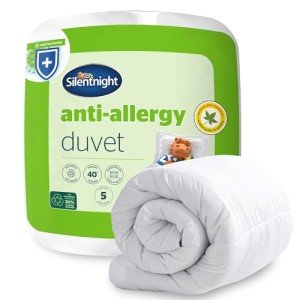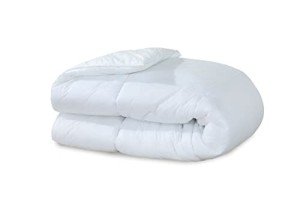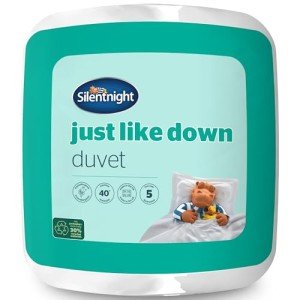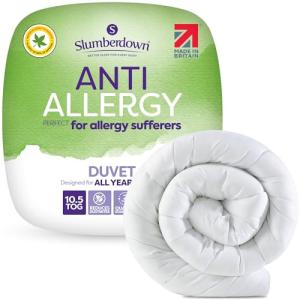In recent years, the significance of adequate sleep has become increasingly recognized among parents and caregivers. A growing number of studies emphasize the profound effect of sleep on children's physical and emotional well-being. One innovative solution gaining traction in ensuring restful nights for children is the weighted duvet. Specifically designed for kids, these duvets boast features such as anti-allergy materials and machine-washable properties. This guide explores the benefits, features, and maintenance of weighted duvets for children, alongside essential FAQs.
What is a Weighted Duvet?
A weighted duvet is a type of blanket that uses evenly distributed weights to provide gentle pressure on the body. This 'deep touch pressure' can promote relaxation and improve sleep quality by fostering a sense of security. For children, particularly those with sensory processing issues, anxiety, or trouble sleeping, weighted duvets can be an effective solution.
Benefits of Using a Kids Weighted Duvet
Weighted duvets offer numerous advantages for children:
-
Improved Sleep Quality: The gentle pressure of a weighted duvet can help children fall asleep faster and stay asleep longer by reducing anxiety and promoting relaxation.
-
Feelings of Security: The heaviness can mimic a hug, providing comfort and emotional support, which is particularly beneficial for children with anxiety or sensory integration challenges.
-
Ideal for Sensory Needs: Children on the autism spectrum or with sensory sensitivities often find weighted blankets calming.
-
Versatile Use: These duvets can be used during nap time, bedtime, or even during quiet time activities such as reading.
Key Features of Kids Weighted Duvets
When looking for an ideal weighted duvet for children, several key features should be considered:
| Feature | Description |
|---|---|
| Weight | Typically available in various weights, ranging from 3 to 10% of the child's body weight. |
| Material | Should be made from hypoallergenic materials to prevent allergic reactions. |
| Machine Washable | Designed to be easily cleaned, ensuring hygiene for your child. |
| Size Options | Available in various sizes to fit different bed types and personal preferences. |
| Durability | Look for high-quality stitching and materials that withstand frequent washing and use. |
| Breathability | Lightweight fabrics that allow airflow help regulate body temperature for a comfortable sleep. |
Choosing the Right Weight
Selecting the appropriate weight for a child's duvet is crucial. A general guideline is to choose a duvet that weighs approximately 10% of the child's body weight. For example:
- A child weighing 30 lbs might use a 3 lb duvet
- A child weighing 60 lbs may prefer a 6 lb duvet
It's essential to prioritize comfort; ensure the child can move freely under the duvet and is not feeling overwhelmed by its weight.
Care Instructions for Kids Weighted Duvets
To maintain the longevity and hygiene of a weighted duvet, proper care is essential. Here are some step-by-step instructions on how to care for your child's duvet:
-
Check the Care Label: Always read the manufacturer's washing instructions for guidelines on temperature and special care.
-
Machine Wash: Newer weighted duvets are often machine-washable. Use a gentle cycle with cold water.
-
Mild Detergent: Opt for a mild detergent free of heavy fragrances and harsh chemicals to prevent allergens.
-
Drying Methods: Air drying is preferable, but if using a dryer, set it to low heat to avoid damaging the fabric.
-
Spot Cleaning: For localized stains, spot cleaning with a damp cloth can be effective without the need for a full wash.
-
Regular Maintenance: Fluff and shake the duvet regularly to redistribute the weight evenly and maintain its shape.
Safety Considerations
While weighted duvets can be beneficial, parents should observe the following safety considerations:
-
Age Appropriateness: Weighted duvets are generally recommended for children over the age of two to prevent suffocation risks.
-
Supervision: Ensure the child can independently move the duvet off themselves if needed.
-
Overheating: Monitor temperature preferences to prevent overheating, especially in warmer months.
FAQs About Kids Weighted Duvets
1. Are weighted duvets suitable for all kids?
While many children benefit from the use of weighted duvets, those with certain medical conditions or respiratory issues should consult with a pediatrician before introducing a weighted blanket into their sleep routine.
2. How do I choose the right weight for my child?
As a general rule, choose a duvet weight that is around 10% of your child's body weight. However, personal comfort should always come first.
3. Can weighted duvets help with anxiety or stress?
Yes, many parents report that weighted duvets can help reduce symptoms of anxiety in children due to the calming effect of deep touch pressure.
4. How do I clean a weighted duvet?
Most modern weighted duvets are machine washable. Always check the care label for specific washing and drying instructions.
5. When should I remove the weighted duvet from my child’s bed?
Monitor your child's comfort and ability to move the duvet freely. If your child seems uncomfortable or struggles to remove the duvet, it may need to be adjusted or removed.
Kids weighted duvets present a valuable sleep solution for many children. Their anti-allergy properties, machine-washable convenience, and effects on improving sleep quality make them an appealing choice for parents. With proper care and mindful consideration of the child's needs, weighted duvets can foster restful nights and rejuvenating sleep, ultimately contributing to holistic well-being. As always, parents should engage in discussions with healthcare professionals to ensure the best choices for their children’s sleep requirements.






